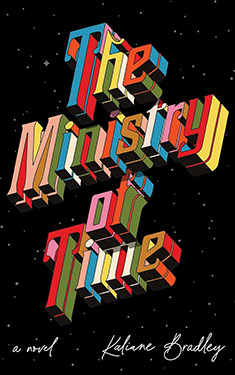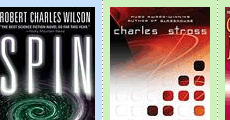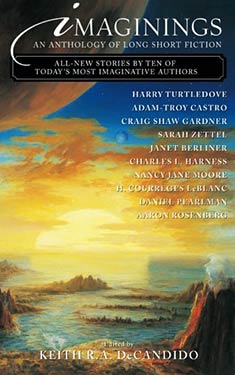Imaginings: An Anthology of Long Short Fiction
| Author: | Keith R. A. DeCandido |
| Publisher: |
Pocket Books, 2003 |
| Series: | |
|
This book does not appear to be part of a series. If this is incorrect, and you know the name of the series to which it belongs, please let us know. |
|
| Book Type: | Anthology |
| Genre: | Science-Fiction / Fantasy |
| Sub-Genre Tags: | |
| Awards: | |
| Lists: | |
| Links: |
|
| Avg Member Rating: |
|
|
|
|
Synopsis
Ten of the most fertile imaginations in science fiction and fantasy come together in one book to create new worlds, new universes, new times, new places, and new realities.
Master of alternate history Harry Turtledove tells a story of the future that casts a frightening light on the present. Award-winners Adam-Troy Castro and Janet Berliner provide two tales of very different kinds of magic. Old master Charles L. Harness is here, as are relative newcomers Aaron Rosenberg, Daniel Pearlman, and H. Courreges LeBlanc. Sarah Zettel looks at the future of computers, Nancy Jane Moore considers the future of gender roles, and bestselling author Craig Shaw Gardner visits a planet called Elvis.
Assembled by bestselling author/anthologist Keith R.A. DeCandido, this book will take you on a journey through ten writers' wildest imaginings....
Table of Contents:
- Introduction: Novelette, Over Easy - (2003) - essay by Keith R. A. DeCandido
- Next Year in Jerusalem - (2003) - novelette by Harry Turtledove
- Amends - (2003) - novelette by H. Courreges LeBlanc
- Totem - (2003) - novelette by Janet Berliner
- The Thalatta Thesis - (2003) - novelette by Charles L. Harness
- A Planet Called Elvis - (2003) - novelette by Craig Shaw Gardner
- Great White Hope - novelette by Daniel Pearlman
- Insider - (2003) - novelette by Sarah Zettel
- Inescapable Justice - (2003) - novelette by Aaron Rosenberg
- Walking Contradiction - (2003) - novelette by Nancy Jane Moore
- Of a Sweet Slow Dance in the Wake of Temporary Dogs - (2003) - novelette by Adam-Troy Castro
- Biographies - (2003) - essay by uncredited
Excerpt
Introduction: Novelette, Over Easy
Keith R.A. DeCandido
Novelette is a really silly word.
Ask the average person on the street what a novelette is, and they're most likely to say that it's a kind of egg dish -- or they'll think it's a malapropism for novelty. Most people are familiar with the terms novel and short story, but once you get into the more esoteric subcategories like novella and novelette, you are met with looks of abject confusion.
However, a novelette is the ideal length for a speculative-fiction story.
My personal definition of SF -- which, for the purposes of this discussion, applies to fantasy, science fiction, and certain types of horror -- is that it's the world we live in with at least one major change. Sometimes that change is as simple as moving forward or backward in time. Sometimes it's that vampires exist. Sometimes it's that someone from our world falls down a rabbit hole or goes into a wardrobe or travels through a wormhole. Sometimes it's that the Axis won World War II. Sometimes it's that the sun is eaten by a giant space goat. Often, it's more complex, of course, but what's important is that the author has to create a new world -- sometimes several -- or, at least, a new way of looking at this world. To do that, and to also weave a tale, sometimes requires a certain amount of storytelling space not provided by the short-story format. After all, SF is the only genre in which the setting isn't (necessarily) real.
SF is also one of the few genres that still has a thriving short-fiction market. It's possible to have a writing career in SF that focuses primarily on less-than-novel-length works (indeed, some of the authors in this volume have such careers). Unfortunately, most short-fiction markets, limited as they are by space, the rising costs of paper, and the desire to include as much as possible, prefer the traditional short story (which usually averages 3000- 8000 words) to those silly-sounding novelettes, which are about 8000-15,000 words, or to 15,000-40,000-word novellas. Such longer works still do get published, of course, but in much smaller numbers.
A pity, that, as some of the most influential and important stories in the field are novelette length: "The Bicentennial Man" by Isaac Asimov, "Blood Music" by Greg Bear, "Tower of Babylon" by Ted Chiang, "Buffalo Gals, Won't You Come Out Tonight" by Ursula K. Le Guin, "Sandkings" by George R.R. Martin, "The Screwfly Solution" by Raccoona Sheldon (better known under her other pseudonym, James Tiptree, Jr.), "Slow Sculpture" by Theodore Sturgeon, and so many more.
The book you hold in your hands is an attempt to provide a new source for these novelettes.
It all started in Framingham, Massachusetts.
It was Boskone, 1999. Boskone is a science-fiction convention that has been held in or near Boston for over four decades now. I was there, doing a panel on anthologies. Also present -- either on the panel or in the audience -- were Patrick Nielsen Hayden, Kathryn Cramer, Esther M. Freisner, and David G. Hartwell, all experienced anthologists. We got to discussing Patrick's Starlight series of original anthologies, and how it was a return to the old-fashioned anthology, à la Terry Carr's Universe series, where the only requisite was that a story be a good example of the genre, as opposed to the "theme" anthologies that proliferate these days (hell, I've edited a whole bunch of them).
Kathryn made a comment that there needed to be more books like that. And I said to myself, "Self," I said, "you should do that."
The catch was trying to make mine unique, and it didn't take long to hit on how to do that: length. I would do an anthology that would be home to the best new novelettes (silly word notwithstanding) in the genre. As a result, the two requirements for consideration in Imaginings -- which was a totally open call, with no preselected stories or guaranteed spots -- were that the story be in the science-fiction or fantasy genre (or horror, but only if the story contained SF elements), and that it be between 8000 and 15,000 words in length.
I received approximately 450 submissions over nine and a half months, and somehow managed to whittle it down to the ten in this volume. It wasn't easy -- I could have filled two more volumes with excellent stories that I ultimately passed on. But in the end, I think we have the cream of the crop. The quality of the submissions certainly, to my mind, proved the ideal-length thesis to be corrrect.
What's more, we have variety. Within these pages are hard-science stories, fantasies, horror stories, superhero stories, funny stories, speculative stories, stories that couldn't have been written before the turn of the twenty-first century, stories that could just as easily have been written in the mid-twentieth, stories from acknowledged masters of the field, stories from relative unknowns.
They have only this in common: they show us the world we know, but with at least one important thing changed, and they are quality tales.
Well, at least I think so. I hope you feel likewise. If you do -- or if you don't -- please drop us an e-mail at imaginings@albeshiloh.com or send us a letter: Imaginings, PO Box 4976, New York, NY 10185-4976. I want to hear your thoughts, positive and negative. As of this writing, I have no idea if there will be an Imaginings 2, but if there is, I want to go in prepared....
So enjoy your journey through ten authors' wildest Imaginings.
-- Keith R.A. DeCandido
somewhere in
New York City
Copyright © 2003 by Keith R. A. DeCandido
Reviews
There are currently no reviews for this novel. Be the first to submit one! You must be logged in to submit a review in the BookTrackr section above.
Images
No alternate cover images currently exist for this novel.



















 Full Details
Full Details







